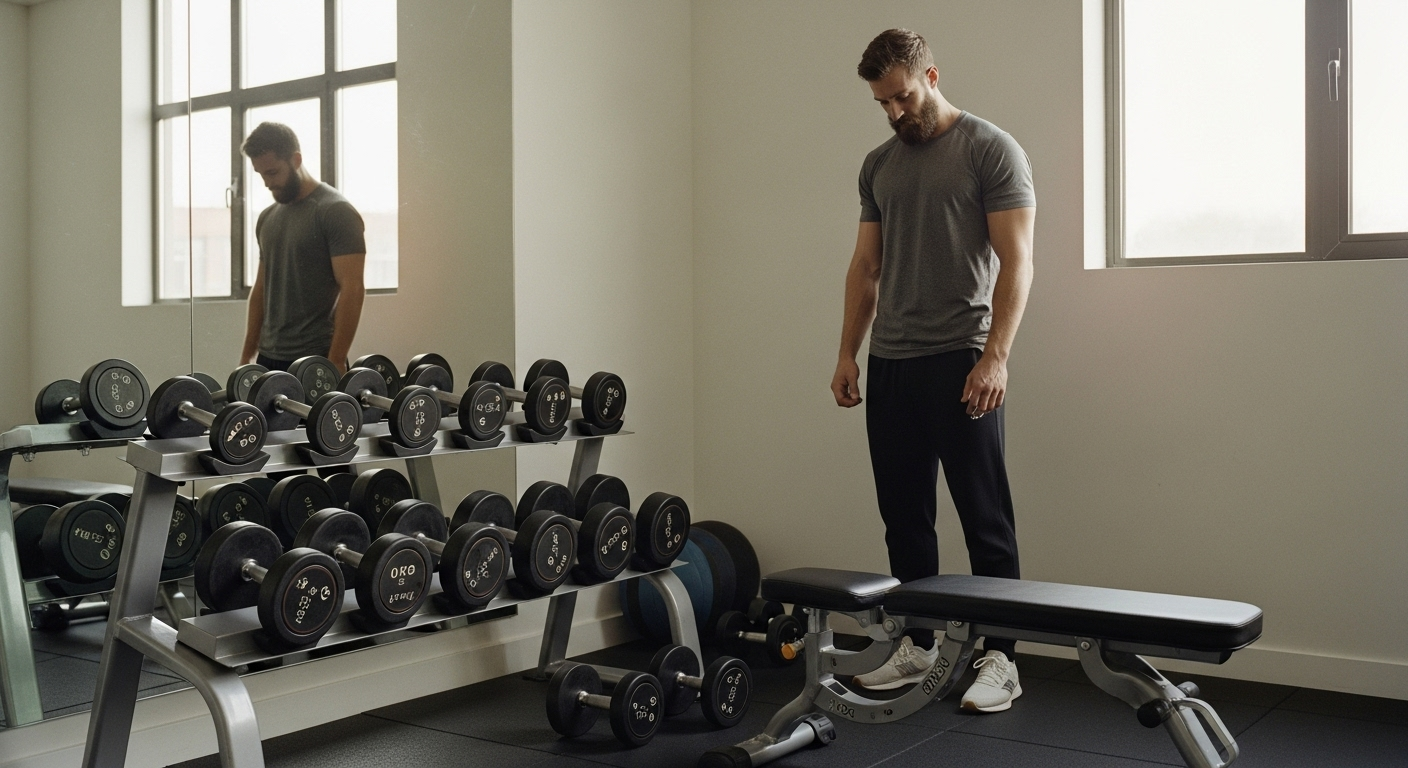What to Do When You Only Have Light Dumbbells
We’ve all been there — a hotel gym with two mismatched dumbbells, or a home setup that’s more decorative than functional. But don’t worry. You can still get a solid workout even if your weights feel too light. You just need to change how you train, not what you have.
1. Increase your reps and go close to failure
When you can’t go heavy, go longer. Instead of your usual 8–12 reps, aim for 15–30 reps per set — as long as the last few reps feel tough. That “burn” you feel means your muscles are reaching fatigue, which is the real driver of growth and endurance.
- Try this: 3 sets of 25 reps for biceps curls, shoulder presses, or squats, resting just 30 seconds between sets.
2. Slow down the tempo
One of the easiest ways to make light dumbbells feel heavy is to slow down your movements. Take 3–4 seconds on the lowering phase (eccentric) and pause briefly at the bottom before lifting again. You’ll increase time under tension and challenge your muscles more.
- Example: For squats, lower for 4 seconds, hold 1 second, and rise for 2 seconds.
3. Use unilateral (single-side) movements
When you train one side at a time, the same weight suddenly feels heavier. Single-arm rows, lunges, and shoulder presses force your stabilizers to work harder while keeping good form. Plus, it helps correct strength imbalances.
- Tip: Add a brief pause at the top of each rep to make it even more effective.
4. Add resistance bands
Resistance bands are light, cheap, and perfect for travel. Combine them with dumbbells for variable resistance — it’s harder at the top, easier at the bottom. That keeps constant tension on your muscles, something most light dumbbells can’t do alone.
- Combo idea: Dumbbell curls + resistance band under your feet = a surprisingly tough arm workout.
5. Focus on form and mind-muscle connection
When you can’t lift heavy, precision matters more. Focus on controlled movements, squeeze at the top, and really feel each contraction. This approach improves muscle activation and helps maintain strength until you can access heavier weights again.
6. Add bodyweight exercises
Pair your dumbbells with bodyweight moves to make sessions more dynamic. For example:
- Push-ups between dumbbell rows
- Jump squats after light goblet squats
- Mountain climbers between arm sets
It turns your workout into a hybrid strength-and-cardio circuit — perfect for keeping your heart rate up when equipment is limited.
7. Try burnout finishers
End your session with a “burnout” — a high-rep finisher using your light dumbbells until failure. You’ll push your muscles past fatigue and get a great pump even with small weights.
- Example: 1 minute of non-stop lateral raises or alternating curls, rest 20 seconds, then repeat twice.
8. Make it a circuit
Turn multiple light-weight moves into a continuous circuit. It builds endurance, keeps your heart rate up, and maximizes time efficiency.
- Sample circuit: 10 squats → 10 rows → 10 presses → 10 lunges per leg → 10 curls. Repeat 3–4 rounds with minimal rest.
Final thoughts
You don’t need heavy weights to make progress — you just need creativity. By tweaking reps, tempo, and combinations, you can make even the lightest dumbbells deliver a serious workout. Add resistance bands, bodyweight moves, or slow control, and you’ll walk away feeling stronger than you thought possible.
You might also like:

Vincent




